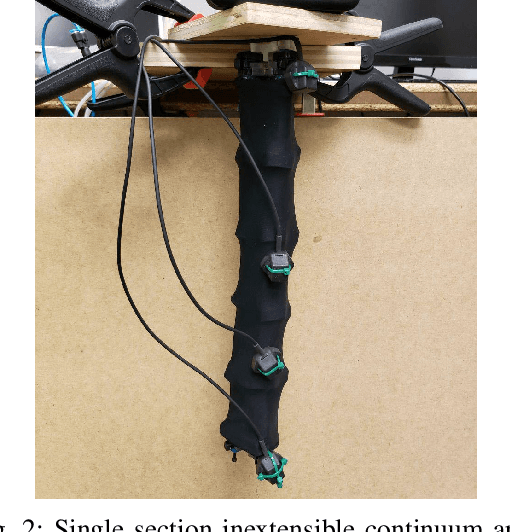Diego Castro
Visual collective behaviors on spherical robots
Sep 30, 2024Abstract:The implementation of collective motion, traditionally, disregard the limited sensing capabilities of an individual, to instead assuming an omniscient perception of the environment. This study implements a visual flocking model in a ``robot-in-the-loop'' approach to reproduce these behaviors with a flock composed of 10 independent spherical robots. The model achieves robotic collective motion by only using panoramic visual information of each robot, such as retinal position, optical size and optic flow of the neighboring robots. We introduce a virtual anchor to confine the collective robotic movements so to avoid wall interactions. For the first time, a simple visual robot-in-the-loop approach succeed in reproducing several collective motion phases, in particular, swarming, and milling. Another milestone achieved with by this model is bridging the gap between simulation and physical experiments by demonstrating nearly identical behaviors in both environments with the same visual model. To conclude, we show that our minimal visual collective motion model is sufficient to recreate most collective behaviors on a robot-in-the-loop system that is scalable, behaves as numerical simulations predict and is easily comparable to traditional models.
Forward and Inverse Kinematics of a Single Section Inextensible Continuum Arm
Jul 15, 2019



Abstract:Continuum arms, such as trunk and tentacle robots, lie between the two extremities of rigid and soft robots and promise to capture the best of both worlds in terms of manipulability, dexterity, and compliance. This paper proposes a new kinematic model for a novel constant-length continuum robot that incorporates both soft and rigid elements. In contrast to traditional pneumatically actuated, variable-length continuum arms, the proposed design utilizes a hyper-redundant rigid chain to provide extra structural strength. The proposed model introduces a reduced-order mapping to account for mechanical constraints arising from the rigid-linked chain to derive a closed-form curve parametric model. The model is numerically evaluated and the results show that the derived model is reliable.
 Add to Chrome
Add to Chrome Add to Firefox
Add to Firefox Add to Edge
Add to Edge